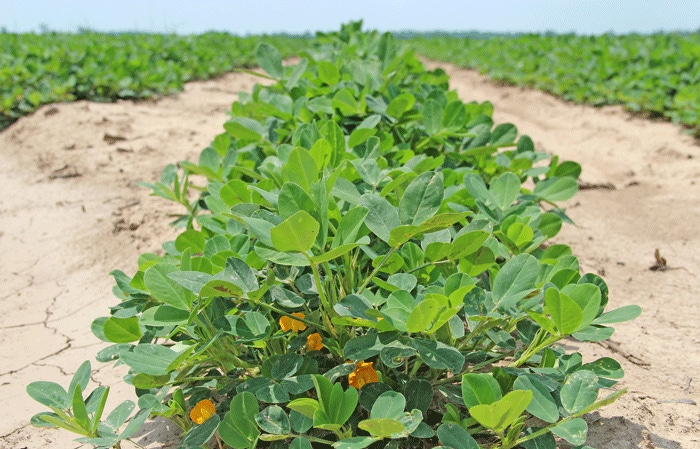
Peanut growers hear sustainability message
The 15th annual Southern Peanut Growers Conference held last week offered discussions on issues that growers do not typically get from production meetings. This year’s program offered some new avenues to help farmers become even more efficient and environmentally sound.The peanut industry faces some significant challenges in the near future but also some opportunities.

As the 15th annual Southern Peanut Growers Conference got underway last week, Randy Griggs, executive director of the Alabama Peanut Producers Association, offered a bit of insight into what has become one of the most successful conferences in the peanut industry.
“This is now the biggest peanut meeting in the industry,” Griggs said. “We had close to 600 registered this year.”
He cites four main reasons for the growth of the meeting that began with about 250 farmers and industry representatives. “Timing is a key,” he said. In mid-July, most peanut farmers can get away for a few days. The crop is planted, and they see a short break before they begin preparing for harvest season.
“It’s also a family-oriented conference,” he added. The Panama City Beach location offers a lot of attractions and activities.
“We’ve also been fortunate to have tremendous industry support. Sponsors have been generous and that allows us to keep registration costs at a minimum.”
Griggs said the conference program also offers discussions on issues that growers do not typically get from production meetings. “We don’t try to rehash what goes on at production meetings,” he said. “We try to address issues that are on growers’ minds. For instance, this year’s theme is sustainability. We understand that farmers are the best stewards of the land.” This year’s program, he said, offered some new avenues to help farmers become even more efficient and environmentally sound.
“Sessions on alternative energy and genomics, for instance, get farmers thinking about new ideas.”
Griggs said the peanut industry faces some significant challenges in the near future but also some opportunities. “We have to maintain market growth.” A large peanut crop last year flooded markets and left a large carryover that depresses prices. “We need consistency. Peanut acreage is market-driven; that’s a fact of life on the farm. They have to deal with it. But we need to grow the market to stabilize supply. Farmers will grow what will make the most money.”
Increasing production costs also poses a challenge to profitability. “That continues to be a huge issue. Input cost increases are not slowing down, so farmers must become more efficient, more cost-conscious.”
If you are enjoying reading this article, please check out Southwest Farm Press Daily and receive the latest news right to your inbox.
The good news is that recent advances in peanut breeding offer more yield potential. Griggs said two-ton-per acre peanuts is not uncommon and has become a production benchmark. “The last five to six years, per acre production averages have gone up.”
Innovative ideas in peanut breeding have been behind much of that increase, he added. “The public breeding program for peanuts is as strong as it has ever been. New varieties are a critical part of production increases.”
A genome study, funded by the peanut industry, promises to take production and production efficiency even further. Griggs said the industry has invested some $7 million in genome research. “It’s important that we keep that in the public domain so that everyone has access to it without high tech fees.”
He doesn’t anticipate herbicide tolerant or insect resistant peanuts developed through genetic modifications—at least not anytime soon. He also believes GMO work might take a different route with peanuts than it has in other crops, seeking to find more health-related traits.
Griggs said the current peanut crop is characterized by some weather problems with both too much and not enough water. Some peanut farms in the Southeast have “either drowned out or have had spraying delayed,” because of heavy and frequent rainfall. “Fields that drain well have done well.”
The Southwest remains under a long drought cycle but some areas received rain in recent weeks.
A combination of unfavorable weather and limited contract prices last spring reduced peanut acreage across the peanut belt.
According to the June 28 National Agricultural Statistics Service report, peanut planted acreage this year is just under 1.1 million acres, down from just above 1.6 million last year. Georgia growers reduced peanut acreage by more than 200,000. Alabama planted 90,000 fewer acres; Texas cut acreage almost by half, 50,000 acres, down from 150,000 in 2012. Florida also took a hit, from 210,000 to 150,000 acres. Oklahoma dropped from 24,000 to 18,000 acres; South Carolina dropped from 110,000 to 85,000 and Virginia growers cut acreage to 14,000, down from 20,000 last year. Mississippi is at 24,000, off from 52,000 in 2013; New Mexico is down to 6,000 acres, off from 10,000 a year ago; and North Carolina dropped from 107,000 to 80,000 acres.
“Some Southeast farmers had to delay wheat harvest and instead of planting peanuts late switched to other crops,” Griggs said.
“Also, the price for corn and cotton resulted in some shift away from peanuts.”
Hopes are that reduced carryover following the 2013 crops will stimulate price; markets will rebound and expand; and that continued research into peanut breeding, production efficiency and other areas will allow peanuts to provide a consistent, profitably crop for southern growers.
You may also like:
Murray Phillips: Peanut Profitability Award winner for Southwest
Public breeding efforts concentrate on special issues
Public cotton breeding fills a gap
About the Author(s)
You May Also Like





